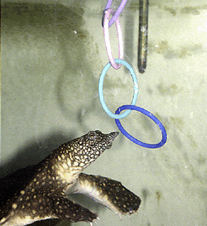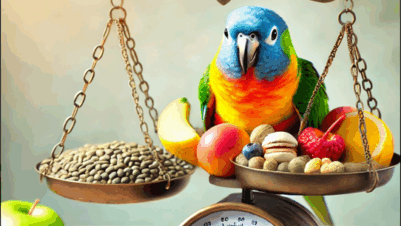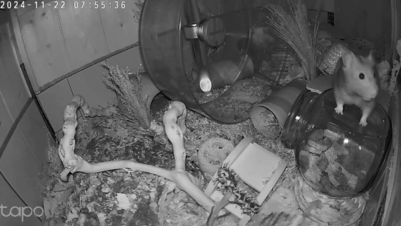On one hand, society should feel comforted knowing that a raft of scientifically designed animal welfare models and principles are not only freely available but also regularly embedded in legislation, guidance and practice. On the other hand, where or if such protections are failing animals, there is much for us to be unhappy about. After all, these models were designed for their comfort, not ours.
What’s new?
A major new review and analysis of the key animal welfare models – the five freedoms, five domains and five welfare needs – in relation to the trading and keeping of exotic pets found that all these mechanisms have strong potential merits as determined by their technical content, usability and popularity (Warwick et al., 2024). Exotic pets provide strong examples of animals that are under human control, hence they are almost always incarcerated and their life choices highly limited.
Whether a government uses the five welfare needs (eg the UK) or another model, they all contain essential protections that are capable of avoiding welfare harms or securing welfare benefits, according to design
The study found that 91 global regions had formally adopted such models – either in overarching primary or secondary legislation – and guidance on animal care. That’s good news because whether a government uses the five welfare needs (eg the UK) or another model, they all contain essential protections that are capable of avoiding welfare harms or securing welfare benefits, according to design.
Not so good was that when analysed against an outcome-led, “on-the-ground” assessment of welfare consequences for animals in trade and private home situations, the key models appear not to be getting through. From examining the published peer-reviewed literature, the study identified reported welfare concerns as numbering (at least) 21 for invertebrates, 27 for fishes, 26 for amphibians, 43 for reptiles, 22 for birds and 43 for mammals. These concerns included, among others:
- Poor and inappropriate environmental conditions
- Spatial restriction
- Deprivation
- Malnutrition
- Invasive disturbances
- Inhumane handling
- Problematic psychological and behavioural conditions
- Stress
- Injuries
- High morbidity and premature mortality
When analysed against an outcome-led, ‘on-the-ground’ assessment of welfare consequences for animals in trade and private home situations, the key models appear not to be getting through
Wild versus captive animal life
The study also made brief comparisons between life in the wild and life in captivity for factors such as home range, diet, habitat and behaviour, which exemplified why caged animals typically have so little and lose out on such a lot. For example, free-living goldfish occupy ranges of approximately 300m to 5km per day, making a fishbowl on a kitchen table seem disgracefully inadequate. Similarly, the home range for a corn snake is about 7.9ha, further exposing the nonsense of English government guidance that recommends vivariums of just two-thirds the length of a snake.
Models need to be better applied
In its conclusions, the study considered that the key models have certainly raised the profile and safeguards of animal welfare, as well as emphasised the responsibilities of their custodians. Unfortunately, the gaps between welfare aspirations and their outcomes remain frequent and wide. Among the study’s recommendations was the pivotal point that, for those with enforcement controls, the key welfare models can make all the difference, but their application requires less talk and more action. In pursuit of that goal, a shift is needed that places what animals want ahead of the desires of their sellers and keepers.
For those with enforcement controls, the key welfare models can make all the difference, but their application requires less talk and more action
What do animals want?
Animals can and do tell us what they want. For example, in science, the preferences of animals can be assessed by providing them with a choice – ie two or more accessible options, such as offering a smaller and more minimalistic versus a larger and more habitat-diverse environment, and then monitoring which they select. Such studies indicate holistically what animals themselves seek from their environment, and what they wish to do within it, so long as one asks the right questions and gives animals the right options. For the most part, enabling animals to make choices is the single best indicator for conditions that are necessary to their health and welfare. Some complications can arise, such as where animals are mentally damaged and they develop conditions such as learned helplessness, in which normal drivers are compromised. However, overall, the scientific and common-sense authenticity of measuring preference is an underlying reason why the approach is now a mainstream methodology for understanding psychological and behavioural motivations in animals.
Enabling animals to make choices is the single best indicator for conditions that are necessary to their health and welfare
The study suggested that, going forward, looking out for providing “animal-centric preferred life quality” can holistically combine science, husbandry and ethics to use the welfare models we have in order to perform the tasks they were designed to do (Warwick et al., 2024).
Freedom to choose
Perhaps overriding all the key welfare models and principles […] resides one unsaid freedom – the freedom for animals to express their preferences regarding the lives they wish to lead
Perhaps overriding all the key welfare models and principles, as well as the thinking and designs behind them, resides one unsaid freedom – the freedom for animals to express their preferences regarding the lives they wish to lead. Yet, in almost all situations, a life in captivity would not be one of those choices.










